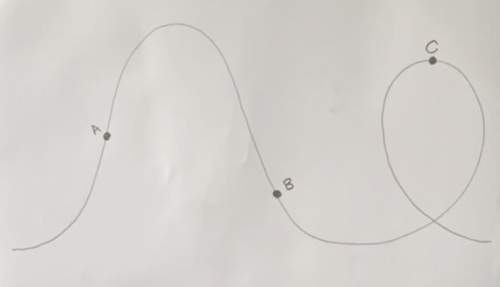
Physics, 10.09.2019 16:10 jdvazquez18p7a7vs
An infinite line charge of linear density λ = 0.30 µc/m lies along the z axis and a point charge q = 6.0 µc lies on the y axis at y = 2.0 m. the electric field at the point p on the x axis at x = 4.0 m is approximately. a. (4.2 kn/c) b. (4.2 kn/c) i + (0.64 kn/c) j c. (-0.96 kn/c) j d. (2.8 kn/c) i + (0.64 kn/c) j e. (5.2 kn/c) i = (2.3 kn/c) j

Answers: 2


Other questions on the subject: Physics

Physics, 21.06.2019 20:00, jferdi2005
When using two-wire cable to feed a 240-v appliance that does not require a neutral wire, you should a. mark both ends of the white wire green. b. use the cable as is. c. use only the black wire. d. mark both ends and any exposed area of the white wire black.
Answers: 1

Physics, 21.06.2019 22:30, ceceshelby646
Astudent is given an assignment to demonstrate diffraction. he takes a photograph of a straw in a glass of water. the straw appears bent at the water level. which best describes this example? a) this is a good example of diffraction. b) this is an example of dispersion and not diffraction. c) this is an example of refraction and not diffraction. d) this is an example of reflection and not diffraction.
Answers: 1

Physics, 22.06.2019 12:10, aedelfrance9250
Aspring has a natural length of 8 m. if a 12-n force is required to keep it stretched to a length of 10 m, how much work w is required to stretch it from 8 m to 16 m? (round your answer to two decimal places.)
Answers: 1

Physics, 23.06.2019 00:10, 2002boo13
Consider a small frictionless puck perched at the top of a fixed sphere of radius r. if the puck is given a tiny nudge so that it begins to slide down, through what vertical height will it descend before it leaves the surface of the sphere? [hint: use conservation of energy to find the puck's speed as a func e conservation of energy to find the puck's speed as a function of its height at what value of this normal force does the puck leave the sphere? ] here on the puck.
Answers: 2
You know the right answer?
An infinite line charge of linear density λ = 0.30 µc/m lies along the z axis and a point charge q =...
Questions in other subjects:


Mathematics, 11.01.2021 14:00

Biology, 11.01.2021 14:00

Social Studies, 11.01.2021 14:00


English, 11.01.2021 14:00


Chemistry, 11.01.2021 14:00


Mathematics, 11.01.2021 14:00















